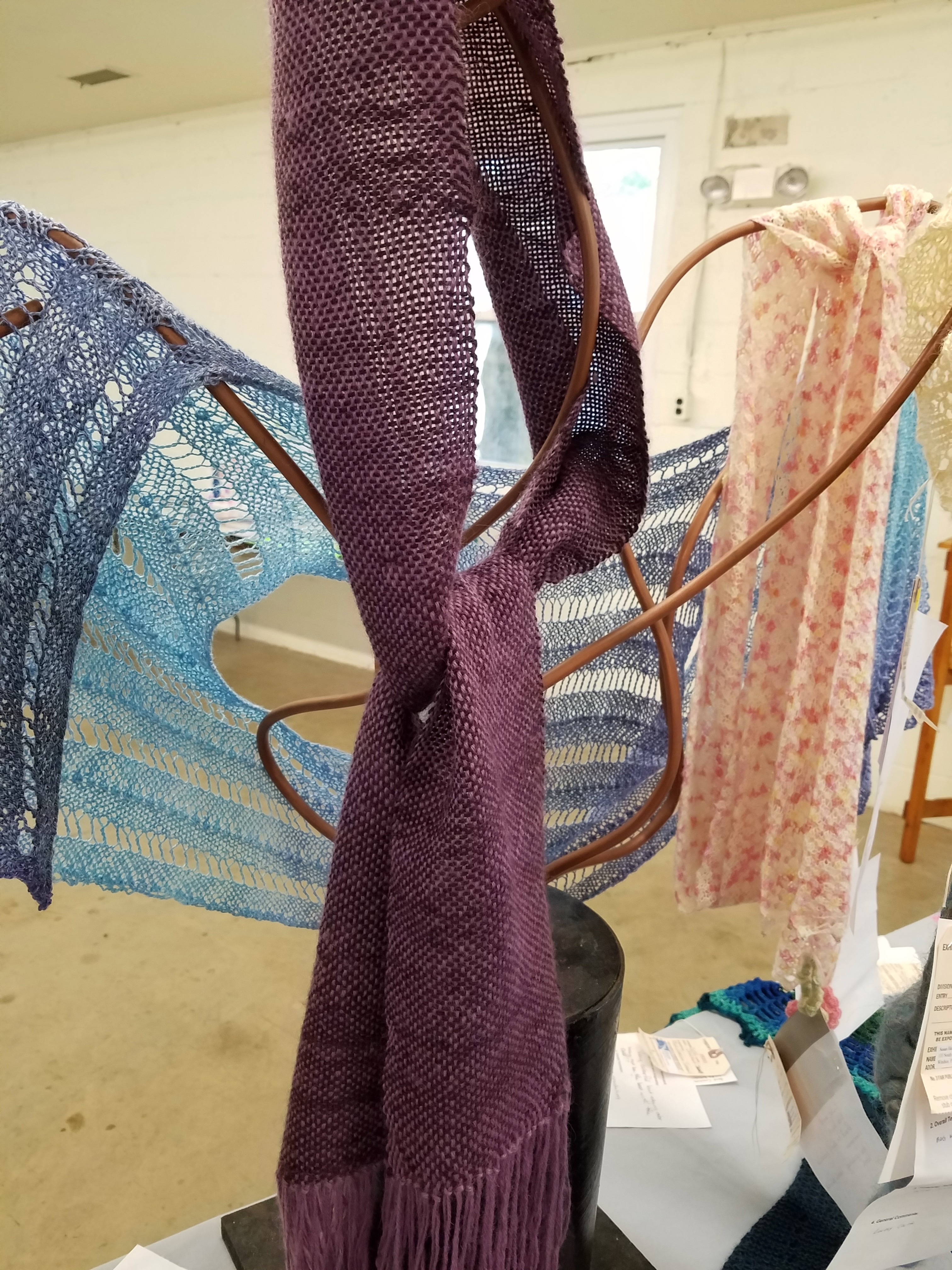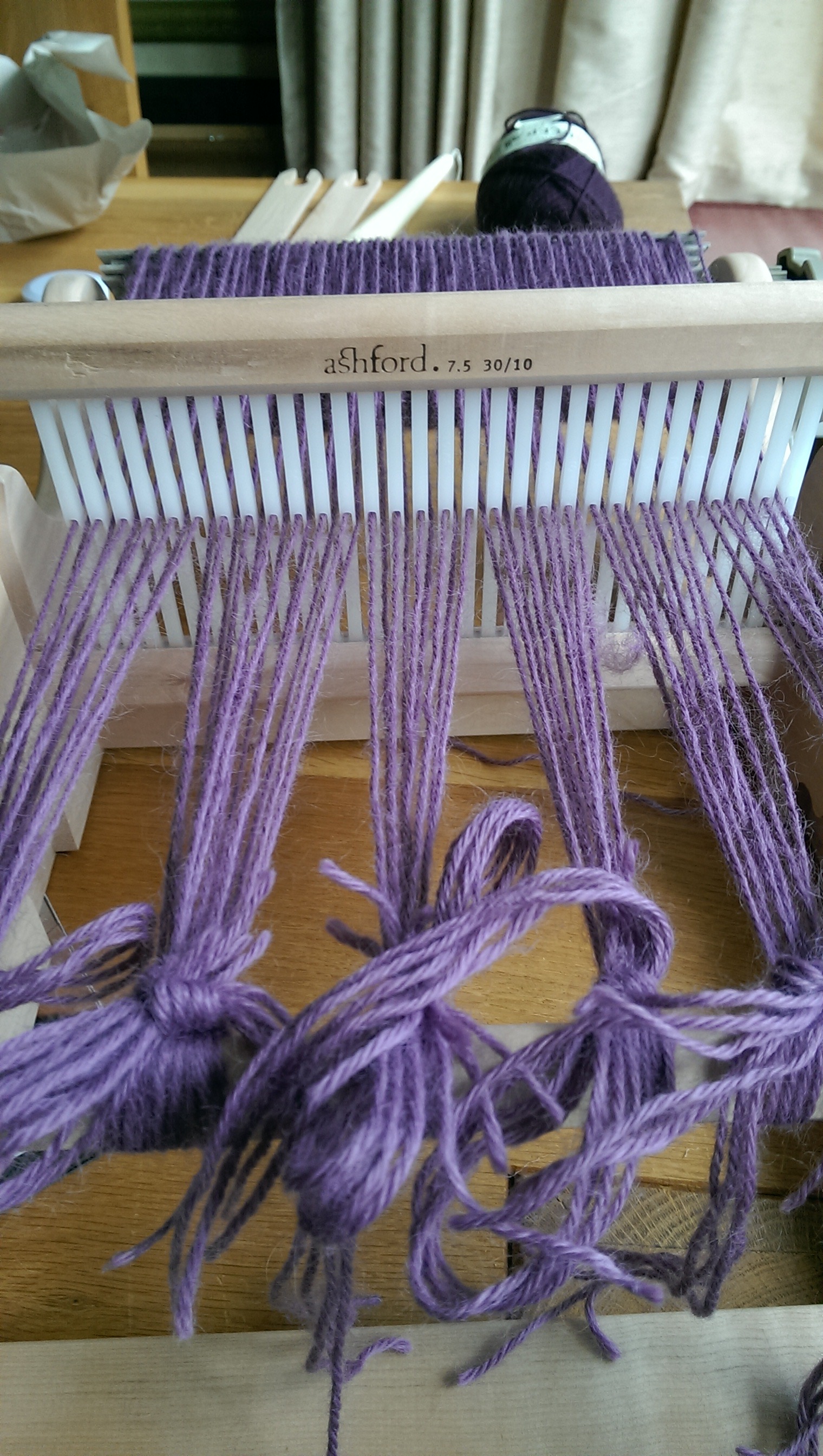Photography by Eva Doyle. A loom warped and ready to go.
A Healthy Tension
For a long time in my career, I was uncomfortable with conflict. The roots of that go back to my childhood spent with an alcoholic parent, but as Judge Judy would say, that’s a discussion for another kind of column.
Regardless, I am not alone in that discomfort with conflict. But over the years, I have come to respect and even enjoy the healthy tension that comes from working with passionate people. In fact, I’ve discovered that some things can’t be accomplished without some of that tension.
Weaving
For example, one of the hobbies I’ve picked up along the way is weaving, using a rigid heddle loom (it’s a small one you can hold on your lap or put on a table). You weave by first setting up your loom with the “warp”, which is the long threads. Then you create your cloth by weaving the “weft” in between the warp.
As you go back and forth with your weft, you move the warp threads up and down to create a space called the “shed.” You “beat” the weft threads to get them nice and tight in the warp. If your warp threads are flabby, it makes the job much harder. You can’t properly beat a flabby warp (words to live by). The whole thing becomes a frustrating mess. But with a nice firm tension on the warp, weaving is such a pleasure. You can whip that shuttle with your weft threads and weave a scarf while you binge watch the latest series on Netflix.
You have to be careful with the tension on the warp threads, because you can make it too tight and cause one to break. Then you’ve got another kind of mess. It’s a matter of balance. Keeping that tension tight enough to make it easy to move the shuttle, but not so tight that the strain on the warp is unbearable, causing it to break. (Just writing this makes me want to get my loom out.)
Another example of when a lack of tension can be annoying is when I carry a light shopping back on my shoulder. When the bag is empty, it won’t stay put. It slips off, and sometimes I don’t even realize it until I’ve almost lost it. But once I’ve got something in there, the weight helps the bag grip my shoulder, and it serves its function well.
Tension in Teams
At work, teams can be like this. Teams work well when there’s a healthy balance and respect for each other and for each person’s roles and responsibilities. A team member who doesn’t really know what to do or how to do it, or doesn’t pull his weight can be like those flabby warp threads. It just makes other people’s jobs harder, and resentment festers. But a team member who knows her role and takes pride in it can be a joy to work with.
The person who knows her role may, from time to time, make it clear if another team member steps on her toes. This isn’t a bad thing. Teams work better when people feel they have a role that is valuable and contributes to the overall effort. Keeping boundaries clear and keeping people in their swim lanes is a great way to keep the project moving forward.
Find the Balance
Again, it’s a matter of balance. The team should be comfortable enough with each other to speak up, ask questions, and offer better ways to get things done. The team experts need to be willing to listen and acknowledge that they don’t have all the answers. That helps create that healthy tension.
Find that healthy level of tension for your team. There are times when it will get flabby and there are times when it will seem to stretch tight, but that’s okay. Keep aiming for that balance and watch your project fly to completion.
Completed scarf from my loom. This took a second-place in one of the weaving categories at the 2017 Maryland Sheep and Wool Festival.

How Can I Help?
Technical experts can become exceptional leaders – but many of them need and want a roadmap. The path forward isn’t as clear as it was for their technical specialty. If you or your organization needs help with your reluctant leaders, please get in touch.



